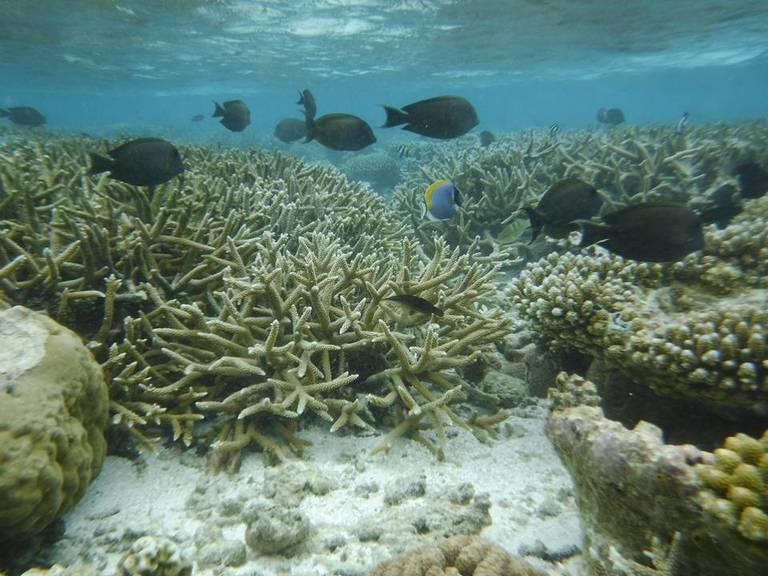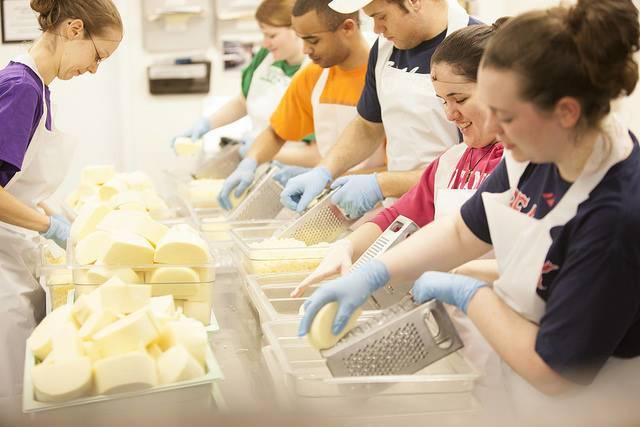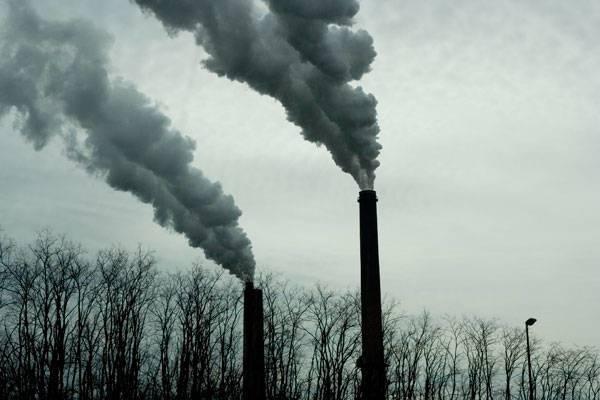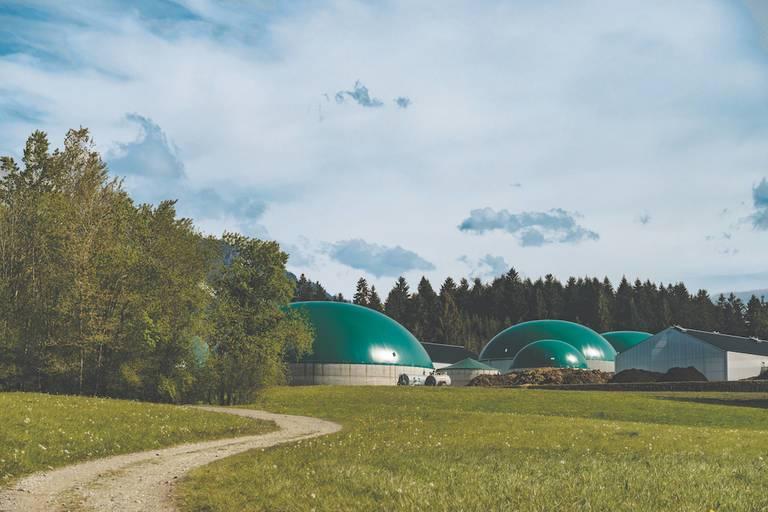In a Race Against the Clock, Scientists in Hawaii Hope “Super Coral” Can Survive Climate Change


Coral reefs offer a bevy of economic benefits. They are the foundation of many fisheries, and in regions from Florida to Australia, coral reefs help support local tourism. The U.S. National Oceanic and Atmospheric Administration (NOAA) has estimated that coral reefs contribute goods and services valued at approximately $375 billion annually - $8.5 billion around Florida alone.
But pollution, rampant development, climate change and ocean acidification have threatened many coral reefs worldwide. Sudden changes in temperature can lead to coral bleaching, which can weaken coral and even cause these complicated ecosystems to die off.
To that end, a group of researchers at the Hawaii Institute of Marine Biology have been laser-focused on understanding coral by going beyond the factors why many reefs are in rapid decline. According to the Honolulu-based news service Civil Beat, these scientists are trying to breed varieties of “super coral” in an effort to halt the impact of climate change on the world’s oceans.
No, this is not some version of GMO- or laboratory-derived coral. Just as ranchers and animal scientists have developed hybrids of chickens and cattle over the years, scientists at this research center seek new generations of corals that can survive in warmer and more acidic oceans. According to Dr. Ruth Gates, the goal is to study the various polyps that comprise coral reefs and address the factors that contribute to their susceptibility to bleaching – phenomenon that severely weakens, and can soon kill off, these vital ecosystems.
The answers are not quite there yet. Perhaps coral’s strengths and weaknesses are just dependent on these polyps’ parents and lineage. Their resilience, in part, could be due to the partners with which they bond in order to create those magnificently colorful reefs. The bottom line is that with half of the world’s coral dead, Dr. Gates and her team are striving to find the strongest and most resilient coral so that their offspring can survive in the long run. Even though former President Obama created the world’s largest protected environment with last year’s expansion of the Northwestern Hawaiian Islands Marine National Monument, many of these spectacular reefs still face annihilation.
The fight to save the world’s coral is unfolding on many fronts. NOAA is mapping, researching and raising awareness about fragile ecosystems in regions such as the Caribbean. Those efforts are complemented by the Elizabeth Moore International Center for Coral Reef Research & Restoration, which says it has harbored thousands of coral fragments from various species in an effort to rebuild Florida’s reefs. In the Maldives, where many of its coral reefs have suffered from bleaching over the last few years, the Korallion Lab on an remote islands is striving to preserve ecosystems that can secure this nation’s future. And off course, the Australian government has developed a long-term plan to counter the demise of the Great Barrier Reef.
But the research in Hawaii stands out for many reasons, including its testing of “assisted evolution” and “assisted migration” theories in a bid to not just evaluate coral’s demise, but to allow it to rebound in the coming decades. Such study requires expensive equipment – but funding and support from organizations linked to the philanthropist Pam Omidyar and Paul Allen have helped Dr. Gates and her colleagues charge ahead in what has become a desperate race against the clock to secure the future of the world’s coral reefs and the marine life and jobs they support.
Image credit: Leon Kaye
Evian Helps French Multinational Danone Inch Toward Carbon Neutrality


Along with the historic Paris agreement, the 2015 COP21 climate talks brought with them a wave of corporate commitments. A host of companies pledged to adopt science-based targets to tackle climate change. They set timelines to source 100 percent renewable energy, divest from fossil fuels and achieve carbon neutrality.
Danone was one of those companies. The French multinational food products firm pledged to be certified carbon neutral across all of its operations by 2050. Its flagship spring water brand, Evian, was to lead the charge by going carbon neutral in a mere five years -- and the CPG giant is making good on its promise.
Last week, Evian unveiled a new state-of-the-art bottling plant that is certified carbon neutral by the Carbon Trust -- marking a significant milestone on its journey to full-fledged neutrality. Company executives used the occasion to announce that all of Evian's operations in North America were also certified carbon neutral.
"We will be the first brand in the Danone company to be carbon neutral, so we are a pilot in this adventure," Véronique Penchienati, president of Evian, told TriplePundit after the plant opening. "This is only the first step, but it is a very important one. It creates pride among our employees, partners and customers, and it motivates us . . . to go even further to reach our 2020 objective."
Evian's bottling facility in the French alps receives water directly from an underground spring, and every bottle of Evian water sold in more than 140 countries is packaged there. The site processes millions of bottles a day, so achieving carbon neutrality is a pretty big deal. We spoke with Penchienati to find out more about how the company accomplished this feat and how it plans to meet its even more ambitious target within the next three years.
Cutting carbon footprint
Evian has relied upon the same water source for nearly 150 years, which Penchienati said makes the company uniquely connected to its surrounding environment and to the planet as a whole. "This all started with the deep awareness that we owe everything to nature. It’s in our interest to protect our natural resources and more broadly the environment," she told TriplePundit.
The company first set its sights on carbon back in 2007, with a pledge to reduce emissions by 40 percent in five years. "We had no clue how we were going to do it," Penchienati said with a laugh. "But it's important to set a fixed target and engage all aspects of the business. This is not a project of people working on sustainability. It’s a project of the whole company."
Evian met its target right on schedule, cutting emissions by 40 percent between 2008 and 2012. As part of this achievement, the company managed to cut energy use by 23 percent per liter of Evian water between 2008 and 2016, even as the business grew to meet rising consumer demand. The new carbon-neutral site also utilizes 100 percent renewable hydropower.
But reaching carbon neutrality across all operations will take bold, holistic action, Penchienati said. "To meet our goal, we need to increase all of our efforts and work through the entire lifecycle of our product and our bottle -- from conception, to production, to shipping and to the end of life."
Getting smart about packaging
Plastic is, of course, a petroleum product -- which means reducing the use of virgin plastic can significantly move the needle on Evian's carbon goals. "We were the first company to use recycled PET in the production of beverage bottles in 2008," Penchienati told us.
As of this year, every bottle of Evian water sold around the world contains an average of 25 percent recycled PET. The company plans to reach 50 percent recycled material by 2020 and hopes to one day make bottles entirely from recycled plastic.
"We need to solve some technical challenges that today we’re not able to solve," Penchienati said of the 100 percent ambition, while expressing confidence in future prospects. "We’re working on that from a research and development point of view and also with partners."
Internally, the company manages 100 percent of its manufacturing waste, 92 percent of which is recycled and the remainder burned for energy.
Developing better transport
Transportation logistics make up a significant portion of the company's carbon footprint, a fact it hopes to address through a multimodal shipping model.
Evian already operates one of the largest private railway stations in France at its bottling site. Sixty percent of the company's products are now shipped by train, which cuts carbon impact by 90 percent compared to road transport. "Sometimes we even put the trucks on the train for use in the last miles," Penchienati told us.
Evian hopes to increase its use of rail in the coming years, while prioritizing boats over aircraft for transoceanic shipping and adopting a cleaner trucking fleet for last-mile delivery.
Ecosystems restoration
Danone founded the Livelihoods Fund in 2008 to further offset its carbon footprint. Focused on ecosystems restoration, the Fund now counts more than 10 top companies as members. It helped plant 130 million trees since its inception, 85 million of which are mangroves -- restoring natural wetland ecosystems and the carbon sinks they create.
The elephant in the room
Evian's climate commitments and stated company values are impressive, but many in the environmental community may question the validity of the product itself. After all, water is available everywhere, yet Evian puts it into bottles and ships it thousands of miles around the world.
This reality is not lost on the company's executives. "It’s a very valid question," Penchienati conceded. "We believe that we have a role to play in promoting healthy hydration everywhere, but we need to do it in a responsible way. That’s why we’re doing all of this, because we are aware of the impact that we have."
It's worth noting the distinction between Evian, a natural spring water, and most bottled water sold on this side of the pond. Unlike the European market, the U.S. has few regulations governing how bottled water is labeled and sold. At least 25 percent of all bottled water sold in the U.S. is just tap water -- some filtered, some not. Other bottled waters come from a hodgepodge of springs and other sources -- compared to a single underground spring, which is the only way a product can be labeled mineral spring water in Europe.
In this sense, Evian is indeed different. Its mineral profile has remained unchanged for hundreds of years, which the company claims carries a myriad of benefits for kidney health. And while some may see a plastic bottle filled with water as intrinsically silly, would they say the same about a can of La Croix? Or a jug of a favorite beer?
The comparison is not too far off, insist Danone executives. "There’s a product difference," said Antoine Portmann, general manager of Danone Waters of America. "When you look at the [North American] market now, most of it is purified water, and we believe that people need to have the choice. Evian has a unique mineral composition, and we very much want to offer that to consumers as an alternative to the other choices that they have."
Ultimately, the demand for bottled water isn't going anywhere -- in fact it's projected to top $22.2 billion in revenues by 2024. Regardless of how you feel about this persistent trend, it's hard to shake a stick at a company that is taking healthy offerings seriously, significantly reducing its impact and leading its parent company toward an ambitious carbon-neutral goal.
Warren Buffet once said, “Time is the friend of the wonderful company, the enemy of the mediocre.” If such a musing holds true, Evian's 150-year history of stewardship in the French alps, and now far beyond it, bodes well for a future of sustained -- and sustainable -- growth.
Image credits: Evian
Editor's Note: Travel and accommodations to the French alps were provided by Evian. Neither the author nor TriplePundit were required to write about the experience.
How to Create a Corporate Volunteer Program


By Hattie E. James
Even if your business doesn’t currently have a corporate volunteer program, chances are that you’ve considered it. It has already been established that volunteer programs have a positive impact on employee well-being. When implemented correctly, they can improve self-efficacy, productivity, emotional health, and physical health.
However, entrepreneurs who have found some measure of financial success typically resist taking on any extra commitments. The amount of attention, planning, and follow-through needed to make substantial changes can be major deterrents. Nevertheless, the benefits to morale and brand perception from volunteer programs are undeniable. If you don’t have a volunteer program, or if you are unhappy with the progress of your current volunteer program, you need to reassess your business needs.
What are the best methods for introducing a corporate volunteer program into your business? How can you maximize employee engagement, your impact on the local community, and the benefits to your business? Here are a few tips to getting started:
Determine the purpose of the volunteer program
The first step to creating an effective corporate volunteer is to assess your local community, as well as your workplace culture. You can research volunteer opportunities online at VolunteerMatch or through organizations like United Way or the local chamber of commerce. Are there any needs in your community that the employees of your business can help meet? Which opportunities would be most likely to appeal to their interests?
Keep in mind that a successful volunteer program is mutually beneficial for both the local community and the company. Ensure that the volunteer opportunities you choose mirror the values and culture of the business. You can do this by evaluating your overall business objectives and determining how each activity can contribute to those goals. For example, if your workplace culture is centered around the importance of sustainability, get involved in green building projects or collaborate with other green-oriented businesses in your area on larger volunteer opportunities.
How to maximize employee engagement
Increasing employee volunteer participation requires that you get to know your workers, find a message that resonates with them, and ensure that you reach each one.Employees are guaranteed to feel more strongly about a volunteer program if they have some amount of control in how it is operated. If you are unsure which opportunities would best resonate with your employees, let them direct your company’s volunteer efforts. It is essential that every level of management shares enthusiasm for the importance of the new volunteer program. Encourage managers to play a part in the program, and consider electing a few of them to become leaders of an employee committee dedicated to establishing the focus and direction of future volunteer efforts. This group can also collaboratively determine volunteer policies. Ensure that these community-generated expectations are consistently enforced.
This same community-led group can determine employee incentives as well. Recognition is a central component to maintaining employee satisfaction and interest, so consider introducing an awards program for those who perform exceptionally at volunteer events.
An excellent way of getting more involved with your local community is by involving the families of your employees in your volunteer program. Even children should be permitted to join in; doing so will both foster childhood development and encourage other family members to participate. Having employees' families represent your business will put a much more personable, friendly face on your brand and strengthen the bonds between employees.
Measuring and announcing progress
Keep in mind at the outset that you need to track the results and progress of your volunteer efforts. Not only should you keep a pulse on your business’s accomplishments, you need to regularly get feedback from your employees regarding their satisfaction with the selected volunteer opportunities. Discuss this feedback in community meetings and look for ways to either improve or maintain employee satisfaction.
To maximize the impact of your CSR efforts on employee motivation and brand perception in the community, you should make announcements regarding your company’s volunteer work. Internal memos should thank employees that participate in such activities and encourage others to join in the future. Externally facing communications, such as social media accounts and press releases, should emphasize the company’s commitment to bettering the local community.
In general, you should take the same approach to branding during your CSR efforts as any non-profit organization would:
- Gain an understanding of your community and speak directly to the needs of your audience.
- Have a consistent message across all channels of communication, including social media.
- Collaborate with local businesses to spread your message and brand awareness.
These are some considerations to keep in mind when starting or revising your corporate volunteer program. By taking this advice to heart, you are already on the path to developing a more socially responsible business and a happier workplace.
Hattie E. James, MBA, is a writer and researcher.
BrewDog gives away 20 percent of profits


San Francisco and Oakland Sue Fossil Fuel Companies Over Sea Level Rise


The cities of San Francisco and Oakland expect to be paying a hefty chunk of change in the coming decades to offset the effects of climate change. According to papers filed this week in State Superior Court, San Francisco expects to be paying out about $5 billion for climate change mitigation this century in an effort to stem the impact of rising seas. Both cities say they see those rising costs more than a question of maintenance: it's a cost that should be borne by those most responsible for global warming.
On Tuesday, both cities filed suits against a five oil and gas companies (Bay Area-based Chevron, ConocoPhillips, ExxonMobil, Shell and BP) that they say knew they were creating a climate crisis as early as the 1990s and "launched a multi-million-dollar disinformation campaign to deny and discredit what was clear even to their own scientists: global warming is real and their product is a huge part of the problem."
The two independently filed law suits add to the increasing effort to "[shift] the costs of abating sea level harm ... back on to the companies" that are seen as having the largest contribution to continuing climate change. In July the city of Imperial Beach and the counties of Marin and San Mateo launched their own suit against fossil fuel companies. Those suits are still working through the courts and present a growing list of data and investigation into the causes and impacts of global warming.
The latest two suits were filed in San Francisco and Alameda County and will be heard in California courts, a state that has been leading the effort to recognize and address the effects of global warming.
Meanwhile, President Trump has taken his own stand on climate change (again). On Friday the Advisory Committee for Sustained National Climate Assessment -- the 15-member committee that issues the country's climate reports every four years -- was informed it was being disbanded.
It's the committee's work in part, that TriplePundit references when it reports on how coastlines and other ecological areas have weathered climate change. The 2018 report, which was leaked almost a year in advance presented data that scientists recognized were not supportive of the administration's position on whether climate change is human-caused. The Trump administration is expected to comment on the report and has the ability to amend it, but at this point it isn't clear whether the report will receive its final stamp of approval. Some scientists have expressed concern that the administration may try to bury the findings of the report.
The most recent suits against fossil fuel companies also come at a time when there is growing international support for the Paris Accord and addressing the causes of climate change. Al Gore, who recently spoke at the Commonwealth Club in San Francisco said that Trump's decisions regarding Paris and the country's role when it comes to recognizing that climate change exists won't change that momentum.
The message from groups that have stepped up to support Paris and to recognize the challenges of climate change, he said is "we’re going to meet the Paris commitments regardless of what President Trump does or says or tweets.” It's a message that more cities and counties are taking to heart with their own message about the need to shift the responsibility for the cost of climate change.
Flickr image: Ruth Hartnup
GM to Deploy 100% Wind Power In Ohio, Indiana


U.S. auto manufacturing giant GM has just come out with a major wind power announcement that illustrates an ironic aspect to the renewable energy revolution. The company will use wind power to help keep its factories humming in Ohio and Indiana, which is great news for job seekers in both the wind and auto manufacturing sectors. The irony comes in on the factory floor, where GM will continue to turn out gasoline powered light-duty pickup trucks.
So...does the new wind power buy represent concrete progress, or is GM spinning its wheels?
The renewable energy conundrum
Using renewable energy to power the fossil resource economy is far from unusual. After all, even a forward-thinking company like Lego has had trouble finding a sustainable replacement for its petrochemical plastic bricks, even as it transitions its front-office operations to wind power.
Renewables have enabled the modern fossil resource industry since at least the 1970s, when research funded in part by Exxon (yes, Exxon) helped bring down the cost of solar modules. Oil companies began deploying solar panels to provide electricity for offshore drilling platforms and other remote sites long before Ikea adopted them.
More recently, solar energy is being harnessed to help bring down the cost of steam-enhanced oil recovery.
In that context, GM's foray into wind power illustrates how complicated it is to achieve real gains in greenhouse gas management.
On the other hand, GM has already taken its greenhouse gas reduction strategy to the next level,with its early adoption of mass-marketed electric vehicles.
GM battled consumer skepticism and significant blowback from conservative pundits when it launched the Chevy Volt gas-electric hybrid several years ago (the gas part only kicks in after the battery runs out). More recently GM introduced the all-electric Bolt, which has won accolades as an affordable alternative to Tesla's Model S.
The company has also taken automotive sustainability up another notch by dipping into the car sharing trend with its Maven ride-hailing service. According to the company, the Bolt is a popular choice among both drivers and passengers.
GM and renewables: lessons learned from early adopters
Speaking of early adopters, let's take a look at GM's new wind power announcement.
The new wind power buy is a massive 200-megawatt commitment that will come online by 2018, at which point all of GM's factories in Ohio and Indiana will get 100 percent of their electricity from renewables.
The participating plants are the Lordstown Assembly, Defiance Casting Operations, Parma Metal Center and Toledo Transmission plants in Ohio and the Fort Wayne Assembly, Marion Metal Center and Bedford Casting plants in Indiana.
Among other models, these plants are responsible for the Chevrolet Cruze, Silverado and GMC Sierra pickup trucks.
GM's initiative illustrates an emerging renewable energy trend picked up by the energy information firm Smart Energy Decisions. According to SED, the industrial sector has been slow to adopt renewables compared to commercial enterprises. However, a new survey by the firm indicates an acceleration of interest among industrial stakeholders.
The survey also indicates that newcomers to the renewable energy field are able to "leapfrog" into more ambitious and sophisticated projects, by tapping into a reservoir of experience built up by early adopters.
That appears to be the case with GM. Although GM is far from new to the renewable energy field, the ambitious wind power initiative represents a big jump up (the new purchase dwarfs a 34-megawatt GM wind energy investment in Mexico in 2015, for example). Rather than trying to reinvent the wheel, GM relied on the guidance of an experienced expert.
To see its renewable energy plans through to fruition, GM embarked on an advisory partnership with Alternex (a division of Edison Energy Company). Alternex provided support to GM in negotiating power purchase agreements with two wind farms.
Under the agreements, GM will claim all of the electricity generated by the 100-megawatt Northwest Ohio Wind Farm, a project of the Starwood Energy Group.
The remaining 100 megawatts are coming from the Hill Topper Wind Project in Illinois, which is owned by the company Swift Current Energy.
Sprinting down the sustainability track
As GM's track record illustrates, sustainability is a long, complex path. Sometimes it involves wheel-spinning, and sometimes there is a strong, irreversible sprint forward. The important thing is to keep striving, as GM makes clear in a mission statement backing up this week's wind power announcement.
In the statement, GM underscores the role of corporate culture in ensuring that sustainable initiatives weave into a holistic path forward. To put that into words, GM recasts the conventional "three P's of People, Planet, Profit" into a new approach:
It takes time to gain traction for these initiatives and embed a sustainability culture into company DNA. It can require a “three P” method of its own: a pragmatic approach fulfilled through perseverance and supported by passion for sustainable solutions.
Breaking it down to the details, GM uses its new wind power buy to underscore the importance of the pragmatic aspect: building support "outside the sustainability space" from the company's various divisions including financial, legal, policy and facilities management, and enlisting outside partners such as local utilities.
The perseverance part comes in when it comes to fostering teamwork among divisions in a company that don't usually work in tandem. GM broke open these company "silos" to make its first wind power deal in Mexico in 2015. Once that teamwork was established, GMs adoption of renewables accelerated significant. That first deal was quickly followed by three more deals including the new one.
As for passion, GM circles back around to the traditional formula with an emphasis on its employees:
Progress would not be possible without the dedication of a team that values sustainability and the benefits it brings to our customers, business and communities. Our people are on a mission to develop sustainable solutions that move humanity forward.
Other recent GM initiatives outside of the renewables field include a renewed emphasis on STEM programs for women and girls, a global recycling and waste reduction effort, and a foray into fuel cells in partnership with Honda.
Photo: Starwood Wind Farm via General Motors.
How Corporations Respond to Climate Change


By Leslie Pascaud, Executive Vice President Branding and Sustainable Innovation, Teiko Uyekawa, Steven Ebert, Kantar Added Value
Climate change has been a topic of interest and concern for over a decade. In 2006/07, Al Gore’s disquieting film, An Inconvenient Truth, along with Nicholas Stern’s calculation of the monumental cost of climate change, shook people out of their apathy. Initially, people felt overwhelmed by the immensity of the task. But slowly, a group of pioneering individuals and businesses began to put strategies in place to lower their carbon emissions by shortening supply chains, revisiting production practices, reducing energy consumption and cutting waste. They quickly discovered that many of these initiatives improved quality of life and reduced costs, thus encouraging them to double down on their efforts. Unfortunately, certain passive businesses and governments have taken much longer to climb on board.
The reality is that the climate has already begun to change. Our seas over the past decade have risen at double the rate of previous years. South Florida and Bangladesh are seeing the most immediate impacts, but projections put cities from New York to Accra at risk in the next 20 years. It’s no surprise, then, that Trump’s recent withdrawal from the Paris Climate Agreement has prompted such overwhelmingly strong condemnation from all but the most retrograde local governments, citizens and businesses across the U.S. and the world. Importantly, some of the world’s biggest financial advisory firms and fund managers are beginning to speak up, as seen in the unprecedented vote by Vanguard and BlackRock against Exxon Mobil on a recent shareholder resolution demanding greater climate disclosure.
Today we can no longer restrict our focus to just stopping climate change. The question ‘what happens if?’ is now necessarily coupled with ‘what happens when?’. Brands and businesses thus require a 2-pronged strategy that includes both prevention and adaptation.
Below are but a few examples of smart companies adjusting to this new paradigm: innovating to adapt to inevitable climate change while also putting in place strategies to prevent or even reverse its effects.
Jackson Family Wines, best known for its Kendall-Jackson Chardonnay, sees the future… and it is drier and hotter than ever before. As a result, at Jackson’s winery, newly dug reservoirs are connected to drip irrigation systems that pull water downhill and through the vineyards. Drones detect moisture by monitoring changes in leaf color to assess the need for irrigation, while a solar powered weather station anticipates cold spells, launching wind machines that circulate warm air to protect the vines. And, in recognition of California’s serious water security issues, the family has chosen to expand northward, recently purchasing three wineries in Oregon.
Danone Wave: Agribusinesses, meat and dairy farming in particular, are significant contributors to climate change. Livestock is estimated to contribute 15% of global greenhouse gasses. A recent call to action from 40 investment companies urged agribusinesses to begin the transition away from meat and dairy. Danone is one company that has heard the call, as demonstrated by their recent acquisition of the plant-based company WhiteWave. Emmanuel Faber, Danone’s CEO explains this move as a means to “leverage consumer trends and expectations for healthier and more sustainable eating and drinking choices”.
Unilever is another company that has been paying close attention to the impacts of climate change. They know their growth will come from countries experiencing water shortage and are proactively seeking to address this reality. In 2016, they launched Sunlight 2-in-1 Handwashing Laundry Powder in South Africa, a country which is experiencing its worst drought in over 30 years. The product includes SmartFoam technology to reduce the need for rinsing which represents up to 70 percent of water usage. In the U.S., Unilever’s Dove brand took a different approach, partnering with and cross promoting Delta Faucet Company at Lowe’s to promote the sale of water saving showerheads while promising a better shower experience.
In their new book, Climate of Hope, Michael Bloomberg, Entrepreneur and Former Mayor of New York and Carl Pope, lifelong environmentalist and former Executive Director of the Sierra Club, remind us that the best way to reach climate skeptics is for more people to tell climate success stories. The book talks about how taking action makes us healthier, extends our lifespan, saves us money and creates jobs that strengthen our economy. This isn’t just wishful thinking. Many solutions have already been identified; others are close at hand. So rather than wringing hands we should all be rolling up our sleeves and getting to work.
Six Charts to Explain U.S. State Greenhouse Gas Emissions


By Johannes Friedrich, Mengpin Ge and Alexander Tankou
(A version of this article originally appeared on WRI.org)
As major global greenhouse gas emitters, U.S. states have the economic heft and legislative authority to move the United States toward much lower emissions and cleaner energy. While many have done so in the last decade, some remain stuck in the high-emitting past.
The following six charts show how emissions from U.S. states compare, how they are changing and what could come next. These are based on the latest greenhouse gas emissions data World Resources Institute compiled for all 50 states (through 2014, the latest year for which in-state emissions data is available).
1. The Top 10 Emitting States Contribute Half of U.S. Total Emissions
In 2014, the top 10 emitting states were responsible for nearly half of the country’s total greenhouse gas (GHG) emissions, nearly equal to the combined emissions of Japan, Canada and Germany, or all of India’s. Click around on the interactive chart above to explore the emissions profile for each state.
Note that the interactive chart (#1) and the donut chart (#2) do not include emissions (or removals) from the land sector, as they cannot display negative values. The remaining charts (#3, #4 and #5) and corresponding analysis include all sources of emissions.
2. The U.S. Energy Sector Contributes 84 Percent of the Country’s Total Emissions
In 2014, the energy sector contributed to about 84% of total U.S. GHG emissions, with electricity generation (29 percent) and transportation (27 percent) being the top two contributors. More recent data shows transportation overtaking electric power as the biggest U.S. carbon dioxide emitter.
3. Texas and California Have Been the Biggest U.S. State Emitters for the Past Decade
Texas and California have been Number 1 and Number 2 top state emitters for more than a decade, which comes as no surprise since both rank in the top two for population and economic size -- two important driving forces of emissions.
Lower down in the list, Iowa became a top 10 emitters in 2012. Even though it is a national leader in the expansion of renewable energy, Iowa’s emissions have been creeping up partly due to economic expansion across its energy and agriculture sectors even as most U.S. states have seen their overall emissions drop over the same period.
4. Wyoming and North Dakota are the Most Emissions-Intensive States By GDP and Per Capita
When having a look at states emissions through the lens of emissions intensity – GHG per GDP and GHG per capita- the story changes. In both cases, the top emitters are Wyoming and North Dakota, followed closely by West Virginia. After that the individual rankings depend on whether the emissions intensity is based on GDP or population. Regardless, there is considerable overlap among the top 10 list for emissions intensity expressed both for their levels of emissions per person and per unit of GDP, with 9 states appearing on both lists.
Also of note, is that Iowa and Louisiana are the only two states that rank in the top 10 in emissions per unit of GDP, per person, and in absolute amount of total emissions. Interestingly, neither of these two states rank high in terms of population size: together they account for less than 3 percent of the total U.S. population. Iowa’s heavy agricultural industry, which includes both food and biofuel production, make it one of the most energy-consuming states in the country. Meanwhile Louisiana, with its abundant fossil fuel resources, has a high energy-intensive industry sector of oil refinery and natural gas production: energy use in Louisiana’s industrial sector contributed to almost half of its total GHG emissions.
New York, the third most populous U.S. state, is one of the country’s lowest per capita emitters. Since 2005 its electricity sector emissions have fallen by more than 45 percent as a result of a range of state-level energy policies that promote efficiency and renewable (such as the Regional Greenhouse Gas Initiative) as well as shifting market forces.
5. Emissions Drop in 35 States
Overall U.S. emissions declined by 6 percent from 2005 to 2014. The story varies, however, on a state-basis.
Thirty-five states and Washington, D.C., reduced their emissions from 2005 to 2014, with Vermont, Maine and Alaska leading the way. Vermont and Maine both benefit from vast forestland that acts as a carbon sink to absorb more carbon dioxide than it releases. Alaska’s reductions came largely from reduced petroleum use for transportation and lower emissions from natural gas use in industry.
Fifteen states have increased their emissions, with North Dakota, Montana and Iowa in the lead. North Dakota’s increase was largely driven by the boom of natural gas and oil extraction, and the lack of standards that require operators to adopt all cost-effective measures for controlling methane emissions. On the other hand, Montana is in this group because of its small absolute emissions, which saw a relatively large percentage increase (from around 2.0 MtCO2e in 2005 to 2.4 MtCO2e in 2014) even though the state – with vast forestland -- still accounts for less than 0.1 percent of total U.S. emissions. The increase in Iowa’s emissions stems from its expanding energy and agricultural sectors, as mentioned above.
6. Emissions from Electricity and Transportation Are in Decline, While Fugitive Emissions Remain a Challenge
Nearly all states have reduced emissions from the electric power sector, with Ohio, Georgia and Pennsylvania recording the largest reductions. The switch from coal-fired power plants to natural gas-fired electricity generation has been one of the leading factors contributing to those reductions: all three states have halved their electricity generation from coal over the past decade according to the latest EIA data.
Most states have also cut emissions from transportation. California, whose transportation sector is the biggest contributor of its GHG emissions, has led the pack by significantly reducing fuel use overall with its efforts to transform to a clean transportation sector. In contrast, Texas has seen a significant increase in its transport-related emissions.
North Dakota and Texas saw the largest increases in so-called fugitive emissions from leaks and other unintended releases, mostly due to increased methane emissions associated with natural gas production.
Without Federal Leadership, States are Stepping Up
With the U.S. representing a significant share of global emissions, it’s a good sign to see many poised to step up their efforts on action to address global warming in the absence of federal leadership. As we have looked to how states got to where they are, there’s a new direction being carved out through the We Are Still In coalition and America’s Pledge on climate change to determine where they are going. To reign in emissions across all sectors and prevent the worse impacts of climate change, states must accelerate a shift towards clean energy and greater efficiency. There is ample proof that this is not only possible but can also be an economic opportunity.
Please Note: The State level greenhouse gas emissions estimates in the interactive chart are calculated based on the State Inventory Tool released by the U.S. EPA. Aggregating state level emissions data might differ from the national level estimate of emissions due to differences in methodology and data sources. Aside from the interactive chart, or unless otherwise specified, all emissions data presented here cover all sectors (including land sector emissions) and all greenhouse gases. The land sector emissions cannot be reflected in the interactive chart due to the existence of negative values.
A Baseline for Success: Creating Sustainable PPPs


By Laura Quintana, VP of Corporate Affairs at Cisco
This is the fourth article in a five-part series on how a company or organization can develop, implement, and sustain successful public-private partnerships (PPP) that achieve large-scale impact. Click to read part one on determining who to work with, part two on determining when and how long to engage, part three on determining how to execute, and stay tuned for next week’s final post on how to leverage technology and innovation.
How can a company or organization develop, implement and sustain successful public-private partnerships (PPPs) that achieve large-scale impact? We’ll discuss in depth today at 10am PT during our #CiscoChat, where we’ll be joined by industry thought leaders to explore PPP best practices and real-world successes.
To develop and sustain successful public-private partnerships, companies must ensure long-term sustainability. Clearly defining success metrics, establishing a baseline, and developing a process for continuous monitoring helps PPPs determine what collaborative success looks like.
Monitoring, analyzing, and reporting these metrics and outcomes can help prioritize projects as well as provide continuous learning, improvement, and replication opportunities. It’s also important to consider how the political and partnership landscape may evolve over time and to update the PPP model, transfer ownership, or implement an exit strategy accordingly.
Cisco Networking Academy, a world-leading IT skills and career building program, addresses the growing need for IT talent by equipping students with entry-level IT and 21st-century career skills. Networking Academy is Cisco’s longest-running corporate social responsibility (CSR) program, and this year, we are celebrating 20 years of impact. We focus on keeping up with rapid technological change, student learning preferences, and employer needs to ensure Networking Academy remains, and will continue to remain, relevant and successful. As such, our program is insights-based and strategically designed to build interest and competency.
An important piece of our long-term strategy is making sure technology and innovation create inclusive opportunities, enabling all people and societies to thrive. As such, we recently committed to expanding the Cisco Networking Academy for people with diverse abilities.
Over the past decade, more than 3000 students with disabilities have benefited from Networking Academy courses, delivered in partnership with organizations helping students with vision, hearing, and selected physical disabilities. We are scaling the reach of this program and have a goal to empower 10,000 students with disabilities within five years.
Digital skills can be an equalizer for people with disabilities, who often have poorer health outcomes, lower education achievements, and higher rates of poverty than those without disabilities.
Wilson Nyabera, who is hearing impaired, grew up in Kibera, Africa’s largest slum. Wilson earned his Cisco CCNA certification after taking Networking Academy courses at Deaf Aid in Kenya, and now works as a network engineer for Copy Cat, an office automation and information technology company. With his salary, he is able to invest in his community and his family, paying his mother’s rent and his younger sister’s school fees.
Over the past 20 years, we have seen firsthand how critical PPPs are, as we’ve worked in collaboration to grow Networking Academy into the world’s leading digital skills and career building program. Bringing new digital professionals into the workforce and building an inclusive digital economy is good for society and business, benefitting partners, customers, and developed and developing economies.
But, most importantly, it benefits millions of students around the globe who receive affordable and accessible education.
Have a question or comment? Tweet at @CiscoCSR and be sure to join us September 21, from 10-11 a.m. PT, for a #CiscoChat with PPP thought-leaders.
Images credit: Cisco
How Evian Automated Its Factory Without Laying Off Workers


Last week, spring water giant Evian unveiled a carbon-neutral bottling site in the French alps. The plant is not new per se, but rather the culmination of a six-year effort to modernize a facility Evian has called home since 1965.
Unlike most bottled waters on the North American market, Evian comes from a single underground spring. Water flows nearly five miles through the earth from a catchment area on the plateau of Gavot in the French Alps to the bottling plant. The company says this 15-year journey through sand and rock gives Evian water a unique mineral composition. But it also means the water is constantly flowing and the plant had to remain operational while modifications took place.
"We've not lost a drop of water in the process," Stéphane Dupays, director of the Evian bottling site, said of the plant upgrade.
The need to maintain 24/7 operations while under construction presented a distinct set of challenges for plant employees. And their future became even more uncertain thanks to a trend that's sweeping the manufacturing sector: automation.
While globalization and access to cheap labor are often blamed for lost manufacturing jobs, research indicates that the rise of robots poses an even greater threat. In the U.S., for example, it took 25 jobs to generate $1 million in annual manufacturing output in 1980. Today, thanks to automated assembly lines, it takes only five jobs.
Here's where Evian's story stands out. Its modernized factory includes multiple automation upgrades, but rather than issuing sweeping layoffs, the company was actually able to bring on new workers. How? By doing something other companies often claim to do, but far too often let fall by the wayside.
Preparing employees for the future
Between 2011 and 2020, Evian will spend more than US$335 million on upgrades to its bottling plant. Included in that total is a broad-sweeping retraining initiative designed to empower employees for tomorrow's workplace and ensure they have a spot at the new factory.
"Around 600 out of 1,200 jobs have been modified," Véronique Penchienati, president of Evian, told TriplePundit after the plant opening.
Rather than hire new people for new tasks, the company offered a collective 30,000 hours of training to retain its current workforce.
Managers held weekly working groups to discuss changes at each level of the assembly line, and employees learned new skills to adapt to these changes. Former forklift drivers, for example, were transitioned to technician roles and trained to remotely operate automated shuttles. At the time of the plant's opening, not only did Evian maintain its team, but it also added 200 new jobs.
"You cannot have this type of transformation — without stopping the factory, with a lot of impact on the jobs people are doing and will do in the future — without having a fully collaborative approach that includes all employees," Penchienati told 3p. "Training was one of the key levers of success." For their part, employees were receptive to the change, and the company won major buy-in from the unions representing them.
Unlike in the U.S., all French factory workers are represented by a labor union. And if a company wants to make a change to its operations that affects employees, it has to get the union's approval first. Evian had 28 consultations with the local union during its six-year construction project, all of which came back with a favorable result.
"It really shows what you can achieve when the people are part of the project," Penchienati told 3p. "It was not a project of the plant director or the boss, but it was a project of all of the employees."
Building on community partnership
More than 90 local companies contracted with Evian to complete the plant remodel, a milestone that builds on a longstanding relationship with the local community. For decades, the company has worked with the Alpine town that bears its namesake, Évian-les-Bains, to preserve its water source and catchment area.
Standing on a picturesque plateau surrounded by mountains, Dupays spoke of the company's people-first mindset. "One approach to preserving the watershed would be to buy everything, but we didn't want to to do that," he said simply.
Instead of gobbling up land, Evian spearheaded a public-private partnership with 13 municipalities near the catchment area. Since 1992, the partnership represented a collaboration between the villages around Évian-les-Bains to protect local ecosystems -- and thereby Evian's product, spring water -- through sustainable agriculture.
The effort came to a peak last year with the roll-out of a project that converts waste from local dairy farms into renewable biogas. Around 70 percent of the region's farmers agreed to send their manure to the Terragr’Eau methanizer, which now processes 40,000 tons of material annually and is the largest of its kind in France.
The result is a watershed free of runoff, a no-cost organic fertilizer for local farmers and enough renewable energy to power 1,200 homes, equal to the annual gas consumption of Evian's bottling site.
Penchienati said people-focused efforts like these speak to Evian's history and that of its parent company, French multinational food products company Danone. "Antoine Riboud [the founder of Danone] was convinced that you cannot split the economic part and the social part of a company," she told 3p. "Everything is combined together, and that’s the only way to do business. You need to involve everyone."
"It's all about the people," Dupays agreed. "The employees and the community feel ownership over the company because they are included."
Image credits: Evian
Editor's Note: Travel and accommodations to the French alps were provided by Evian. Neither the author nor TriplePundit were required to write about the experience.